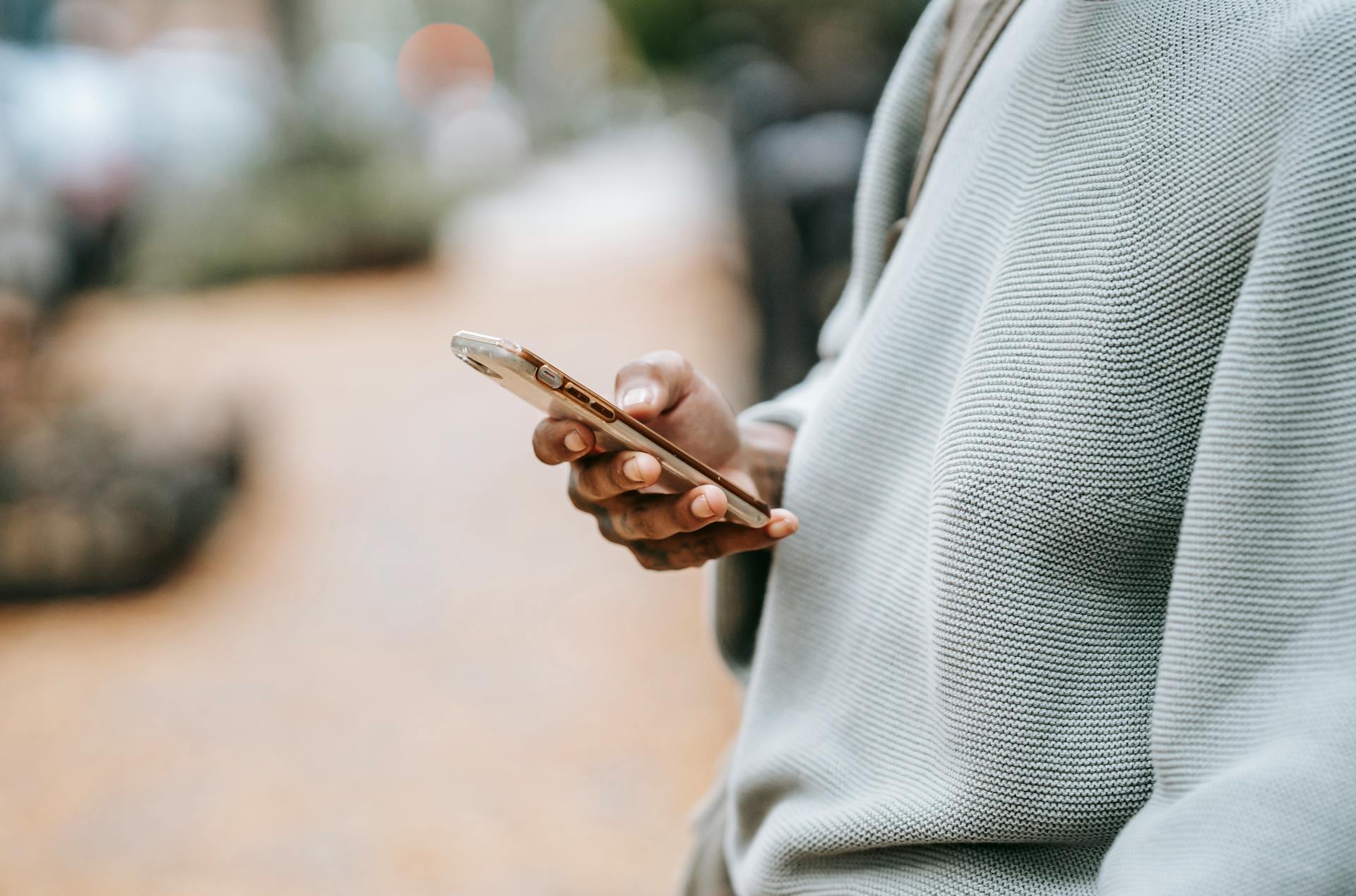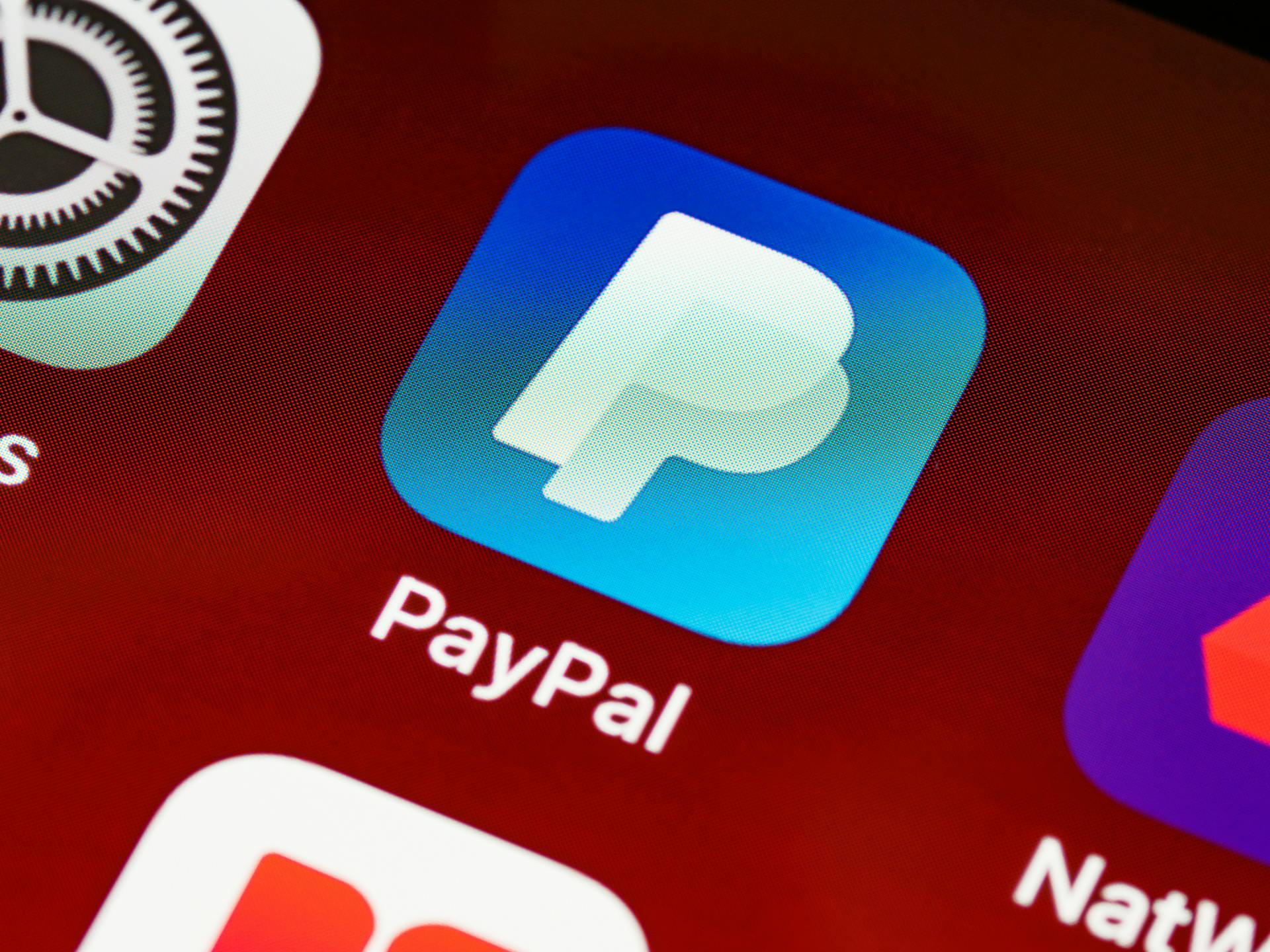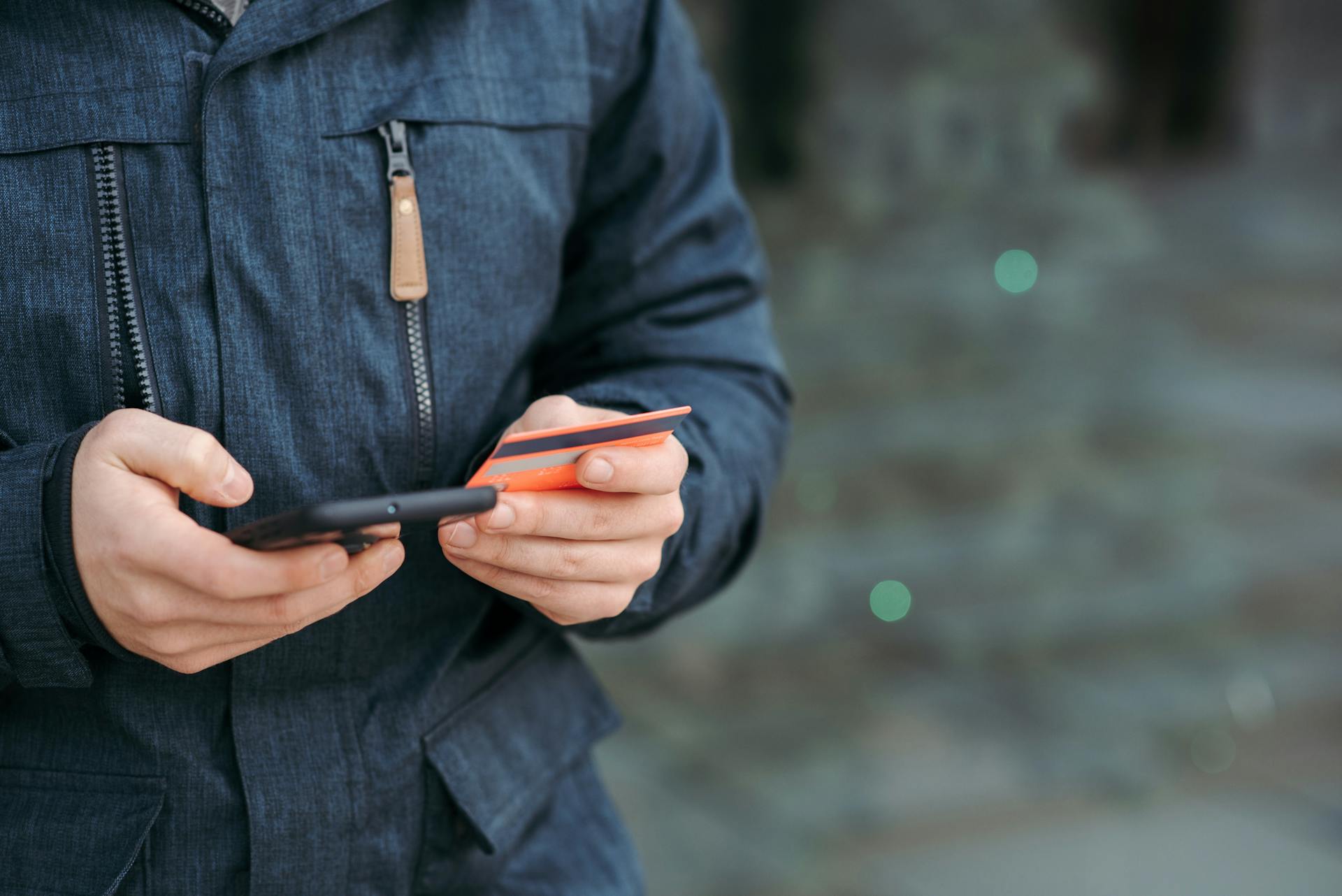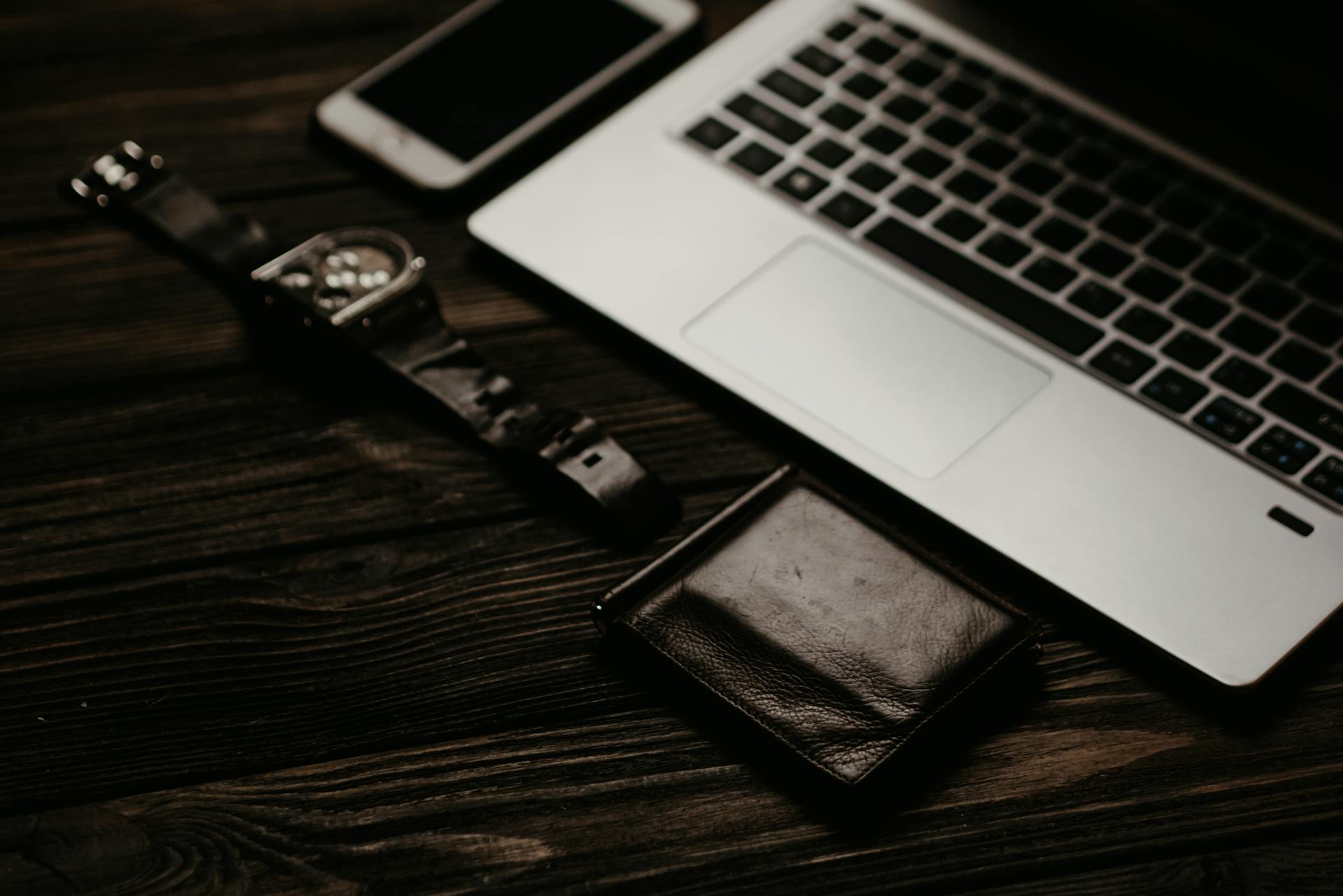
Mobile money in the Philippines is on the rise, making cashless transactions more convenient than ever. According to the Bangko Sentral ng Pilipinas (BSP), the country's central bank, the number of mobile money users has increased significantly in recent years.
The BSP has approved various mobile money services, including GCash, PayMaya, and InstaPay, which offer a range of features such as mobile banking, bill payments, and fund transfers. These services have made it possible for Filipinos to send and receive money digitally.
With mobile money, users can also make purchases online and in-store, as well as pay bills and collect rewards points. For example, GCash users can buy load, pay bills, and even invest in mutual funds using their mobile phones.
You might like: Wechat Pay for Foreigners
What Are Cashless Payments?
Cashless payments are transactions with no physical cash involved. This mode of payment has gained significant traction in recent years.
It offers unparalleled convenience, allowing users to transact swiftly and seamlessly. This is especially helpful when you're in a rush or don't have any cash on hand.
Cashless payment methods in the Philippines include debit and credit cards, mobile banking apps, and even contactless payment alternatives. These choices cater to diverse preferences and situations for customers.
Using cashless payment methods can minimize the risks of loss or theft, making digital transactions a more secure option.
Discover more: Real Time Credit Payment
Digital Wallets
Digital wallets have revolutionized the way we make payments in the Philippines, with over 58 million active users as of 2022.
The country's financial landscape has undergone a significant transformation, shifting from traditional payment methods to digital ones. Various digital wallets have emerged, each offering unique features and advantages.
Maya Wallet, for instance, has reached 50 million registered users, making it the second most-used e-wallet service in the Philippines. It allows users to transfer money, pay bills, and even buy cryptocurrencies like Bitcoin.
GCash, a pioneer in the Philippine digital payment scene, has over 71 million registered users, with over 90% of the Philippine adult population using the e-wallet. It offers a user-friendly interface and diverse functionalities, including bill payments, prepaid load purchases, and investments.
Digital wallets like Coins.ph and 7-Eleven Cliqq also provide convenient payment experiences, allowing users to load their wallets at various locations and use them for various transactions.
For your interest: Philippine Sarswela
The benefits of digital wallets are numerous, including enhanced security, convenience, and efficiency. They also enable cross-border payments, eliminating delays and high fees associated with traditional methods.
In the Philippines, digital wallets have become an essential part of daily life, with many businesses and consumers relying on them for transactions.
Explore further: Digital Wallet Benefits
Benefits and Features
Mobile money in the Philippines has revolutionized the way we think about transactions. Digital wallets have emerged as a game-changer, offering numerous benefits that shape the financial landscape.
E-wallets have made the banking world more accessible, with over 56% of Filipino adults now having bank accounts, up from just 29% in 2019. This is a significant increase, and it's all thanks to the digital revolution.
One of the standout benefits of digital wallets is their convenience. With e-wallets, you can store funds, complete transactions, and even invest in assets - all in a matter of seconds. You can also use an e-wallet for short-term needs like ordering food, booking a ride-share, or tracking expenses.
Suggestion: E Wallet Vietnam
Digital wallets are fast and affordable, and they're also more secure than other payment methods. In fact, by leveraging advanced processes known as tokenization, e-wallets help protect your information from potential hackers and fraud.
Here are some key features of e-wallets in the Philippines:
- Money transfers between users
- Send money to other local and international banks
- Pay recurring bills
- Purchase mobile and gaming prepaid credits
- Pay offline merchants by scanning unique QR codes
- Checkout from online stores using virtual or physical cards
- Get insurance coverage for e-commerce purchases, personal health, and mobile devices
As of June 2022, Maya Wallet has reached 50 million registered users, making it the second most-used e-wallet service in the Philippines. With an estimated 58 million active e-wallet users in the Philippines, this number is expected to grow to 81 million by 2025.
Digital wallets also optimize financial operations for businesses. With comprehensive transaction records, businesses can minimize the time spent counting bills and coins at the end of each business day. This streamlines processes while reducing the risks associated with handling and transporting cash.
You might enjoy: How to Use E Wallet
E-Wallets
E-wallets are revolutionizing the way we manage our finances in the Philippines. Over 56% of Filipino adults now have bank accounts, up from just 29% in 2019, thanks in part to the accessibility of e-wallets.
Readers also liked: E Cheque
E-wallets like GCash and Maya are making it easier than ever to transfer funds around the world. For example, with uLink, you can send money to a friend's GCash account in the Philippines with no fee, using a bank account as the payment method.
E-wallets are fast, affordable, and more secure than other payment methods. They use advanced processes like tokenization to protect your information from potential hackers and fraud.
If you're looking to send money to the Philippines, consider using uLink, which offers zero-fee transfers to major wallets like GCash and Maya.
Here are the top 3 e-wallets in the Philippines, according to recent trends:
In just a few years, e-wallet usage in the Philippines has nearly tripled, from 2017 to mid-2020. By 2025, over 75 million Filipinos will be using e-wallets to make payments and receive remittances from overseas.
Security and Risks
Enhanced security features in mobile wallets in the Philippines can significantly reduce the risk of unauthorized transactions or data breaches.
With features like biometric authentication, encryption protocols, and verification, you can feel more secure when making cashless payments.
However, the Philippines is also vulnerable to money laundering, particularly due to its position along major trafficking routes.
The country faces a high money laundering threat arising from various crimes, including drug trafficking and graft and corruption.
Lack of supervision in some nations, including the Philippines, can make it easier for money launderers to take advantage of regulatory gaps and inconsistencies.
E-wallet transactions happen quickly, allowing money launderers to shift illicit funds around swiftly while avoiding oversight measures and inquiries.
Inadequate user identity verification procedures can also enable criminals to covertly launder money through e-wallet services.
Enhances Security
E-wallets in the Philippines can significantly reduce the risk of unauthorized transactions or data breaches with features like biometric authentication, encryption protocols, and verification.
These advanced security measures contribute to increased customer trust, making cashless payment processes a safer option.
The heightened security of e-wallets also protects against data breaches, which can be devastating for individuals and businesses alike.
Maya, a notable e-wallet, was recognized by the National Privacy Commission for its efforts to build a secure financial ecosystem.
Its #FraudPatrol campaign and data privacy practices earned it two awards at the 2022 Privacy Awareness Week Awards.
A different take: Does Mobile Data Cost Money
Money Laundering Risks
Money laundering risks are a significant concern in the Philippines, particularly when it comes to e-wallets. The country's vulnerability to money laundering is due to its position along major trafficking routes, with a high risk arising from predicate crimes such as drug trafficking, graft, and corruption.
The relative anonymity provided by online financial services and the speed of transactions contribute to the money laundering risk associated with e-wallets. This allows money launderers to take advantage of regulatory gaps and inconsistencies.
Some nations lack the necessary regulations to effectively address AML e-wallet issues, making it easier for money launderers to exploit these gaps. Regulatory bodies must work to close these gaps and strengthen their AML/CFT frameworks.
E-wallet transactions happen swiftly, allowing money launderers to shift illicit funds quickly and avoid oversight measures. Criminals can structure their transactions with the aid of quick transaction times, using multiple transfers between different accounts.
Anonymity is another risk factor, as e-wallet companies often use insufficient user identity verification procedures. This allows criminals to use their services to covertly launder money, presenting false information about their identities or opening multiple accounts.
The Philippines has been placed on the FATF grey list due to its weaknesses in AML/CFT regulations. To improve its global reputation, the country is working to bolster its AML/CFT framework and enhance the effectiveness and efficiency of its AML compliance programs.
To mitigate these risks, e-wallet firms should implement a formal anti-money laundering system of internal controls. This includes conducting customer due diligence, transaction monitoring, and screening and monitoring.
Here are the key steps to include in anti-money laundering for eWallets:
- Customer due diligence: Confirm customer information such as names, addresses, and dates of birth to accurately establish customer identities.
- Transaction monitoring: Keep an eye on customer transactions for any unusual behavior that can point to money laundering.
- Screening and monitoring: Thoroughly screen customers to ensure they are not the target of international sanctions or mentioned negatively in the media.
By implementing these measures, e-wallet firms can reduce the risk of money laundering and contribute to a safer and more secure cashless payment process.
Service Interruptions
GCash has experienced multiple service interruptions in the past, lasting between one and eight hours. These disruptions have been reported during its surge of popularity from 2017 to 2020.
The company has taken steps to address these issues, but users have still reported problems. In response, GCash launched "Double Safe" in 2023, which requires facial identification from customers.
To put this into perspective, imagine being unable to access your account for several hours – it can be frustrating and disrupt your daily life.
GCash's service interruptions have been a concern for users, and the company's efforts to address these issues are a step in the right direction.
Frequently Asked Questions
How does GCash work in the Philippines?
GCash is a mobile wallet service in the Philippines that allows users to send money, pay bills, and buy load, with the option to borrow money through GCredit for purchases and bill payments. With GCash, users can enjoy flexible repayment options to suit their budget.
Sources
- https://inquiro.ph/cashless-payment-in-the-philippines-best-ewallets-to-consider/
- https://en.wikipedia.org/wiki/Maya_(mobile_payments)
- https://en.wikipedia.org/wiki/GCash
- https://ulink.com/blog/sending-money-to-the-philippines/
- https://www.tookitaki.com/blog/e-wallets-and-anti-money-laundering-in-the-philippines
Featured Images: pexels.com


